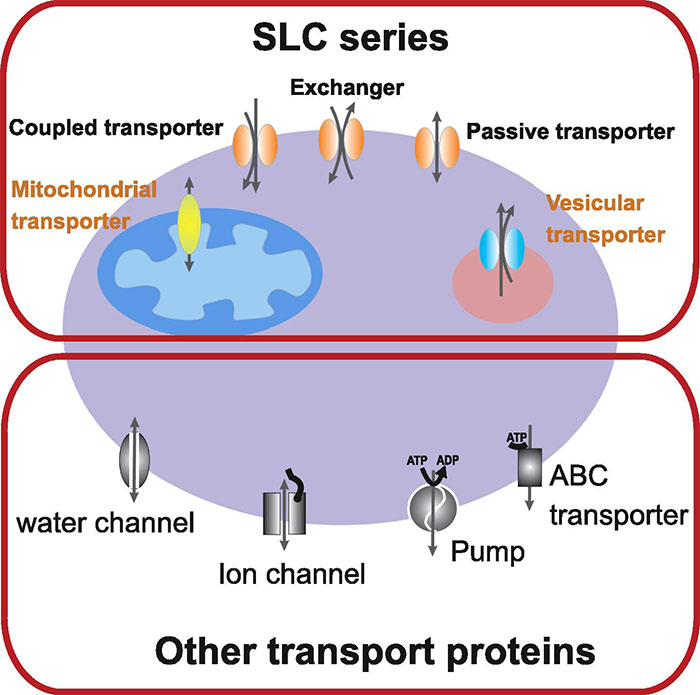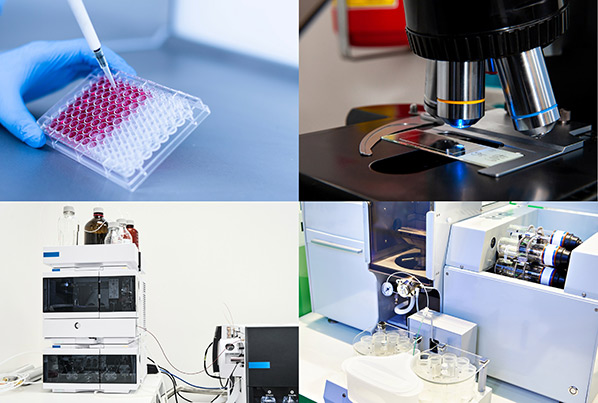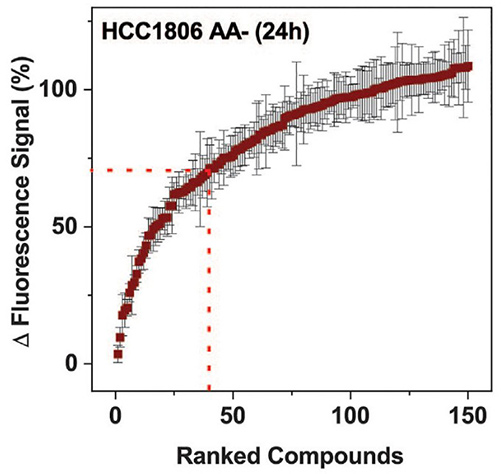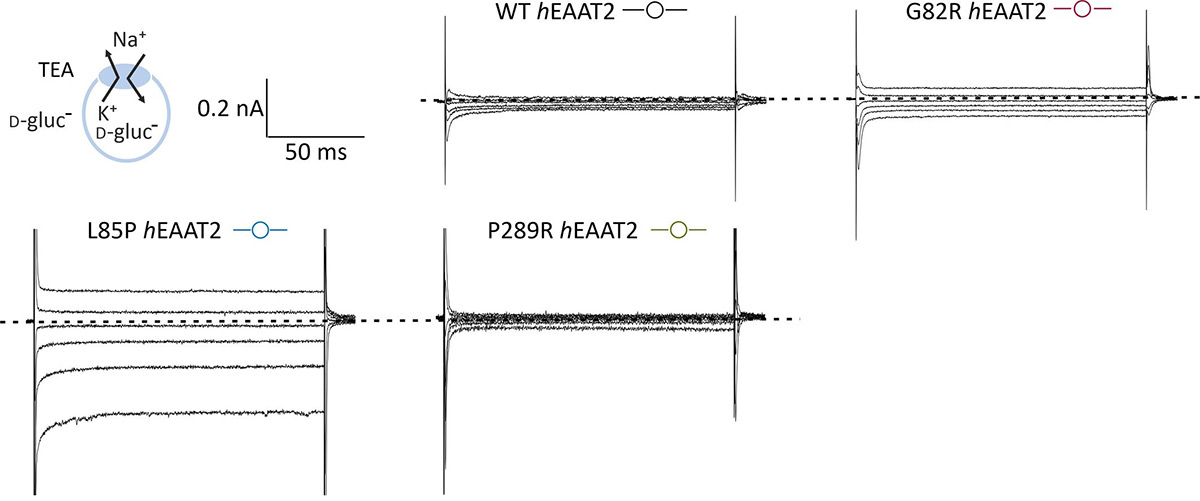Transporter Screening Assays
Background

Figure 1. SLC, ABC, and other transporters. (Morris et al., 2017)
Transporters and ion channels play a fundamental role in regulating the movement of essential nutrients, ions, metabolites, and drugs across cell membranes and organelles. These mechanisms are critical for maintaining cellular homeostasis and directly influence the absorption, distribution, metabolism, excretion, and toxicity (ADME-Tox) profiles of therapeutics.
Transporters are now recognized as key determinants of a drug’s pharmacokinetics, efficacy, and safety. Disruption—whether by inhibition or activation—of specific transporters can lead to significant clinical consequences, ranging from diminished therapeutic effect to severe adverse reactions.
Two major superfamilies dominate the transporter landscape:
- ATP-binding cassette (ABC) transporters
- Solute carrier (SLC) transporters
These proteins are also implicated in the pathophysiology of a broad range of diseases, including asthma, cardiovascular conditions, diabetes, and neurological disorders, making them highly attractive and relevant targets for drug discovery and development.
As a trusted leader in Transporter Screening Services, Creative BioMart offers cutting-edge solutions to support your research and development goals. Our assays are powered by proprietary technologies and deep domain expertise to overcome common challenges in transporter model development.
What We Offer?
Service Procedure

Assay Formats
Whether your study requires a focused look at a single transporter or a comprehensive profile across multiple transporters, Creative BioMart offers flexible assay formats to meet your needs.
-
Single Transporter Assays
-
Muti-Transporter Assays
* Note: For your convenience, the transporter names listed above are hyperlinked to their corresponding protein or gene pages. There, you can find detailed background information about each transporter, including its biological function and relevance. In addition to our Transporter Screening Assays, Creative BioMart also offers a wide range of recombinant protein products for these targets to support your broader research needs.
Technologies and Instrumentation

- Recombinant Overexpressing Cell Lines
- Vesicular Transport Assays
- Radiolabeled Substrate Assays
- Fluorescence-Based Assays
- Electrophysiology
- Atomic Absorption Spectrophotometry (AAS)
- Mass Spectrometry
- High-Throughput Automation Platforms
Why Choose Us?
- Functional Characterization of Compound Activity: We deliver mechanistic insights by directly measuring transporter-mediated uptake, efflux, or inhibition across various biological systems and expression models.
- Advanced Cell-Based Models: We utilize proprietary and validated cellular models that replicate physiological transporter expression and function for reliable in vitro-to-in vivo translation.
- Predictive ADME-Tox Screening: Our transporter assays support early identification of absorption and toxicity risks, de-risking drug candidates before costly in vivo studies.
- High-Throughput Functional Assays: Our automated platforms support rapid screening of large compound libraries, ideal for early-stage discovery and preclinical development programs.
- Comprehensive Coverage of Key Transporters: We assay a broad panel of clinically relevant ABC and SLC transporters, including major drug and neurotransmitter transporters recommended by regulatory guidelines.
- Flexible Project Design: We offer fully customizable workflows—from cell models and assay formats to data outputs—to fit your specific scientific and regulatory objectives.
Case Study
* NOTE: We prioritize confidentiality to safeguard our clients’ technology and intellectual property. As an alternative, we present selected published research articles as representative case studies. For details on the assay services and products used in these studies, please refer to the relevant sections of the cited literature.
Case 1: Identification of a SNAT2-selective inhibitor
Gauthier-Coles et al., 2022. doi:10.3389/fphar.2022.963066
SNAT2 (SLC38A2) is a sodium-dependent transporter crucial for amino acid uptake, osmotic balance, and mTORC1 activation, with relevance to cancer metabolism. A high-throughput FLIPR membrane potential assay was developed to screen for SNAT2 inhibitors, leveraging its inducibility and electrogenic nature. Screening ~34,000 compounds identified a potent SNAT2-selective inhibitor with an IC50 of 0.8–3 µM. While cancer cells tolerated the inhibitor alone, combining it with glucose transport inhibitor Bay-876 significantly suppressed proliferation in breast and pancreatic cancer cell lines. This suggests a promising therapeutic strategy targeting both glycolysis and glutaminolysis in cancer.

Figure 2. High throughput screen to identify inhibitors of SNAT1 and 2. Confirmatory screen of the top 150 compounds. (Gauthier-Coles et al., 2022)
Case 2: EAAT2 anion channel in epileptic encephalopathy
Kovermann et al., 2021. doi:10.1111/epi.17154
Mutations in the SLC1A2 gene, which encodes the excitatory amino acid transporter EAAT2, are linked to severe epileptic encephalopathy. EAAT2, primarily responsible for glutamate uptake in the brain, also acts as an anion channel. This study investigated three epilepsy-related EAAT2 mutations (G82R, L85P, P289R) using cell expression, imaging, and electrophysiology. G82R and L85P enlarged the anion pore, enabling glutamate efflux, while P289R reduced glutamate uptake but increased anion currents. These alterations may lead to excitotoxicity and seizures. The findings suggest that targeting EAAT2’s anion channel function could offer a novel therapeutic approach for epilepsy.

Figure 3. Epileptic encephalopathy (EE)–associated mutations impair human excitatory amino acid transporter 2 (hEAAT2) -mediated l-glutamate transport. (A) Representative whole-cell current recordings from HEK293T cells expressing wild-type (WT) or the pathogenic variants. (Kovermann et al., 2021)
Customer Testimonials
-
“We relied on Creative BioMart for transporter interaction studies covering P-gp and BCRP. Their data were consistent, well-documented, and fully aligned with FDA expectations. Their support was critical in helping us prepare for our IND application with confidence.”
— Director of Preclinical Research | Mid-Sized Biotech Company
-
“We needed to evaluate SLC transporter activity related to a CNS compound. Creative BioMart delivered customized assays with quick turnaround and very detailed analysis. Their flexibility in adapting to our neuro-specific needs was especially appreciated.”
— Principal Investigator | Neuroscience Institute
-
“What impressed us most was the breadth of Creative BioMart’s transporter panel. We screened across OATPs, OCTs, and MATEs in a single campaign. Their team tailored the format to suit our internal workflow, saving us significant time.”
— Project Manager | Global Pharma
-
“Transporter assay development can be tricky, but Creative BioMart was responsive and hands-on. They worked closely with our scientists to optimize uptake kinetics for a challenging compound. The collaboration felt like a real extension of our team.”
— Group Leader | European Contract Research Organization
-
“We needed BBB-relevant transport models and high-sensitivity readouts. Creative BioMart provided both, along with clear data packages that supported investor discussions. Their flexibility and deep technical knowledge really stood out.”
— Senior Scientist | Start-up Focused on Neurodegenerative Disorders
FAQs
-
Q: Which transporters do you cover in your assay panels?
A: Our panels include a broad range of regulatory-recommended drug transporters from both the ABC and SLC superfamilies. This includes key efflux and uptake transporters such as P-gp, BCRP, OATP1B1/1B3, OCT2, OAT1/3, MATE1/2-K, and more. We also offer neurotransmitter transporter assays relevant to CNS drug development. -
Q: Can you customize the assays to fit our compound class or study design?
A: Absolutely. We offer fully customizable protocols, including adjustments to cell model, incubation conditions, substrate selection, and detection method to best match your scientific objectives. -
Q: What types of detection technologies do you use?
A: We use a variety of cutting-edge platforms including fluorescence-based detection, radiolabeled uptake assays, and LC-MS/MS quantification to provide flexibility across sensitivity, throughput, and compound compatibility. -
Q: How quickly can we expect results?
A: Turnaround time depends on assay complexity, but for most standard transporter interaction studies, results are delivered within 2–4 weeks. Urgent requests can be prioritized upon consultation. -
Q: Can you support early-stage discovery as well as regulatory studies?
A: Yes. Our services support both exploratory screening (e.g., CNS penetration prediction) and GLP-compliant data generation for regulatory packages. Whether you're in hit discovery or IND-enabling studies, we’ve got you covered.
-
Q: Do you provide data interpretation and regulatory support?
A: Definitely. Our experienced scientists assist with data interpretation, report generation, and even regulatory strategy alignment to help your study results drive informed decisions.
Resources
Related Services
Related Products
References:
- Gauthier-Coles G, Bröer A, McLeod MD, George AJ, Hannan RD, Bröer S. Identification and characterization of a novel SNAT2 (SLC38A2) inhibitor reveals synergy with glucose transport inhibition in cancer cells. Front Pharmacol. 2022;13:963066. doi:10.3389/fphar.2022.963066
- Hediger MA, Clémençon B, Burrier RE, Bruford EA. The ABCs of membrane transporters in health and disease (SLC series): Introduction. Molecular Aspects of Medicine. 2013;34(2-3):95-107. doi:10.1016/j.mam.2012.12.009
- Kovermann P, Kolobkova Y, Franzen A, Fahlke C. Mutations associated with epileptic encephalopathy modify EAAT2 anion channel function. Epilepsia. 2022;63(2):388-401. doi:10.1111/epi.17154
Contact us or send an email at for project quotations and more detailed information.
Quick Links
-

Papers’ PMID to Obtain Coupon
Submit Now -

Refer Friends & New Lab Start-up Promotions

